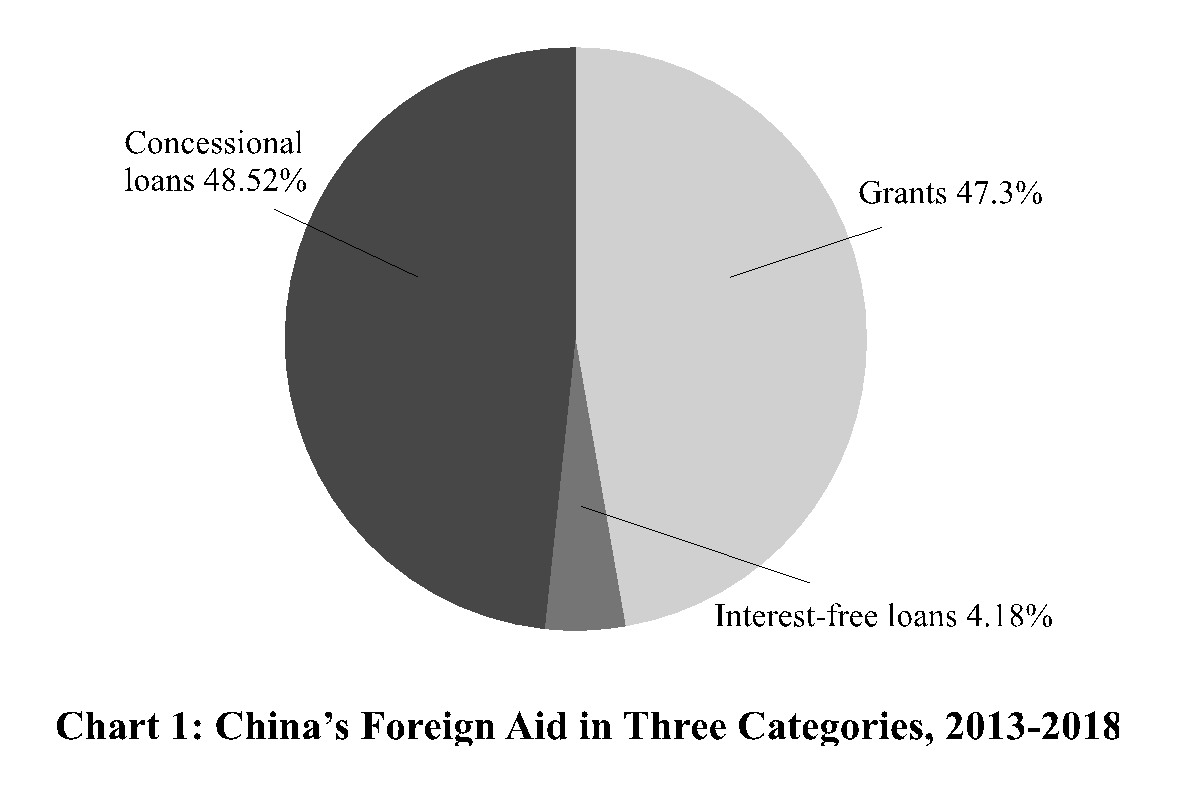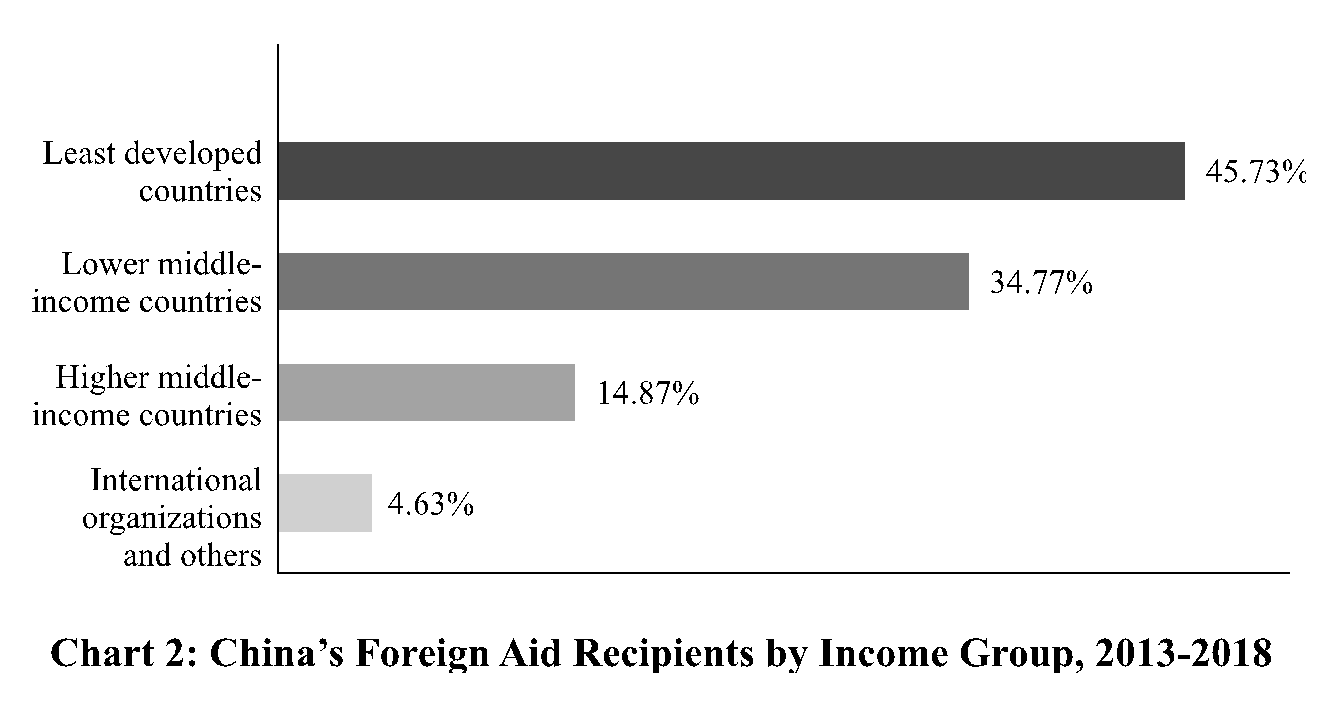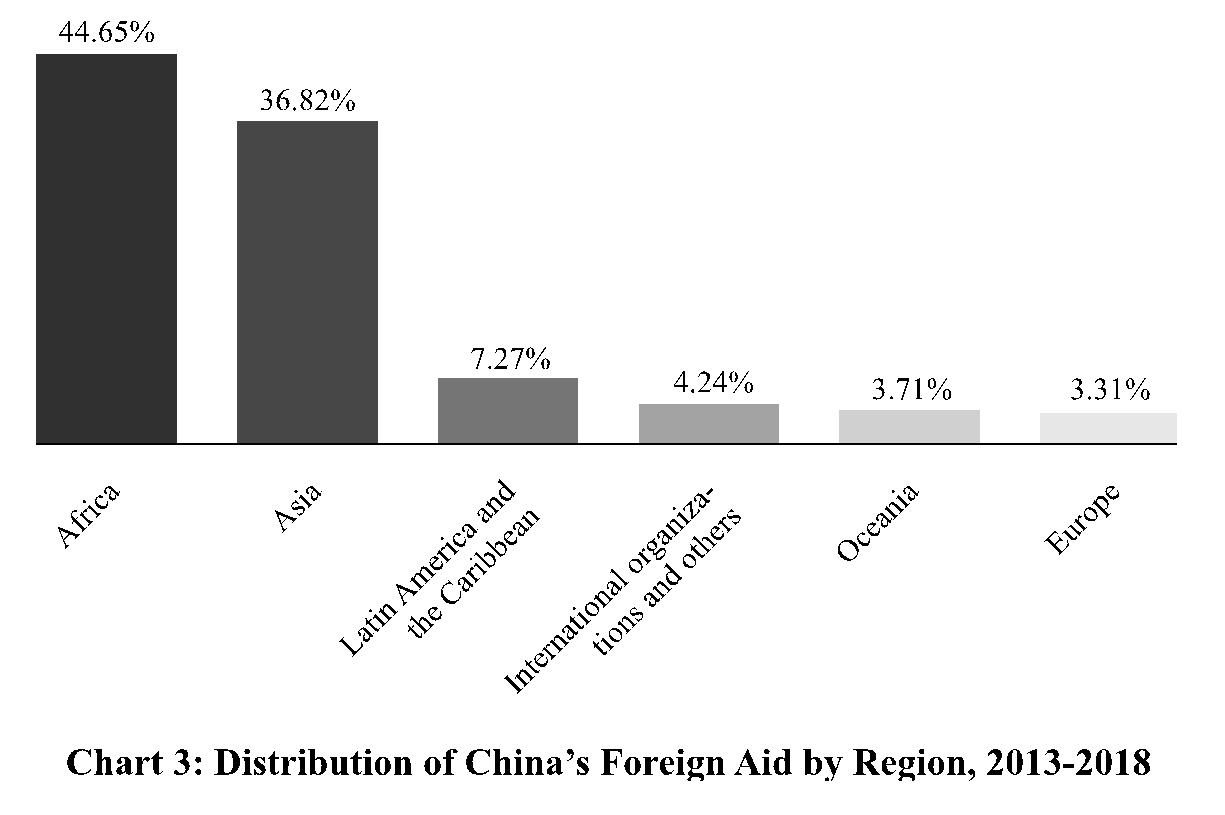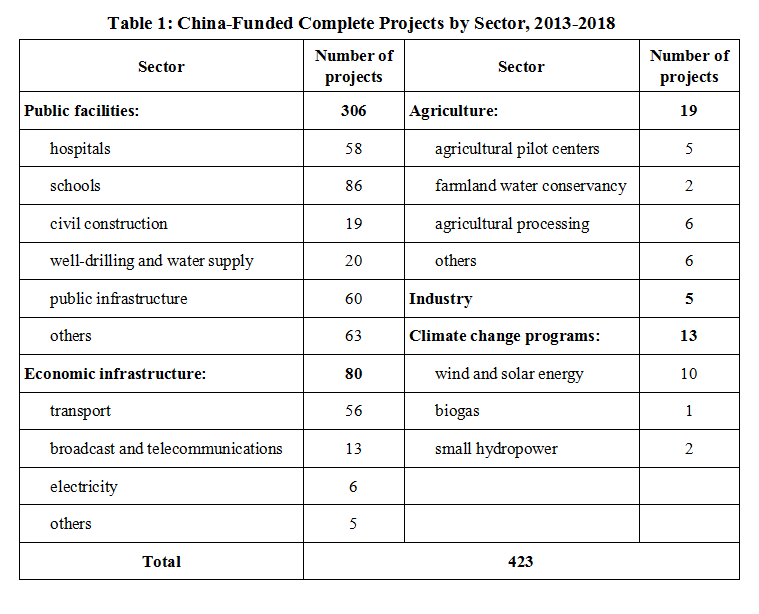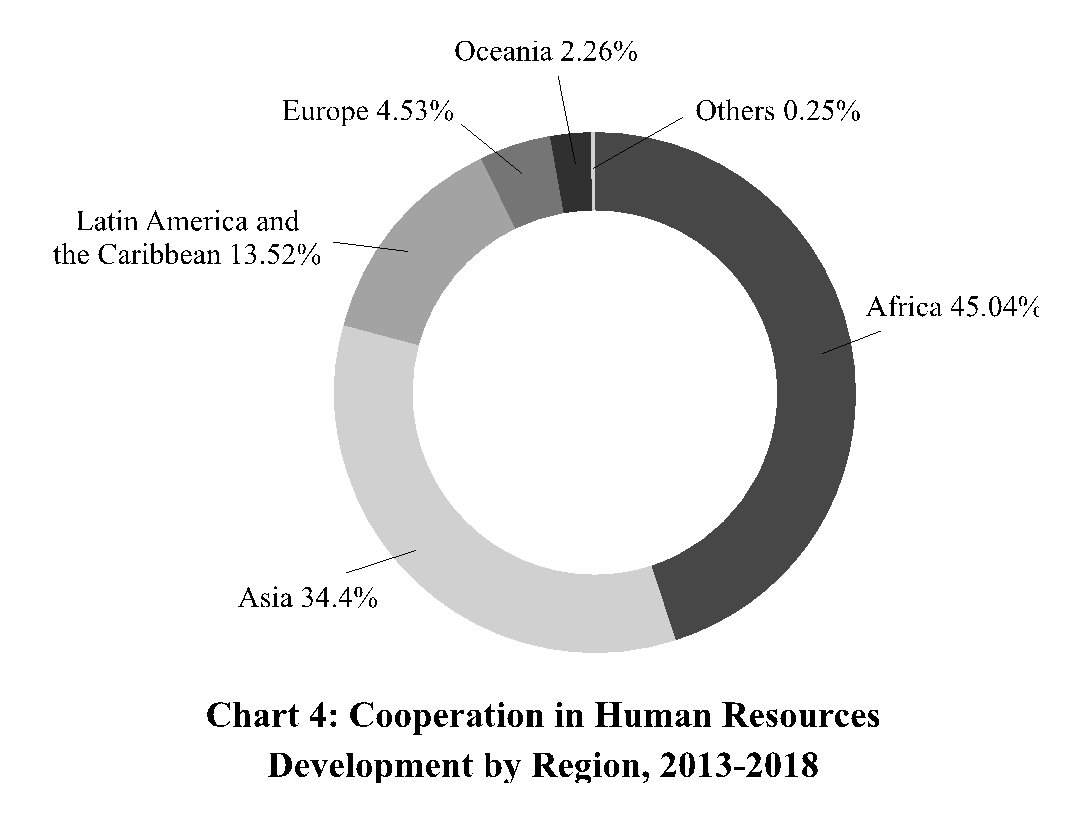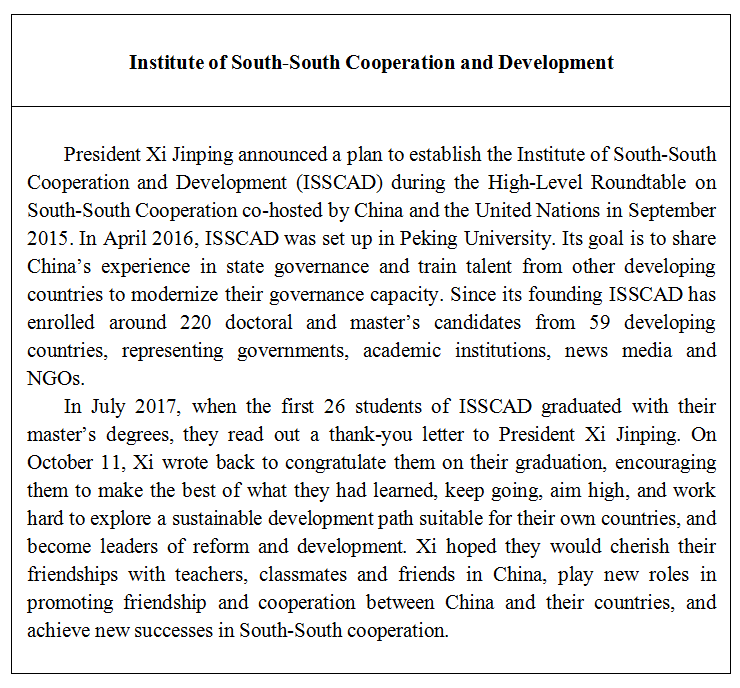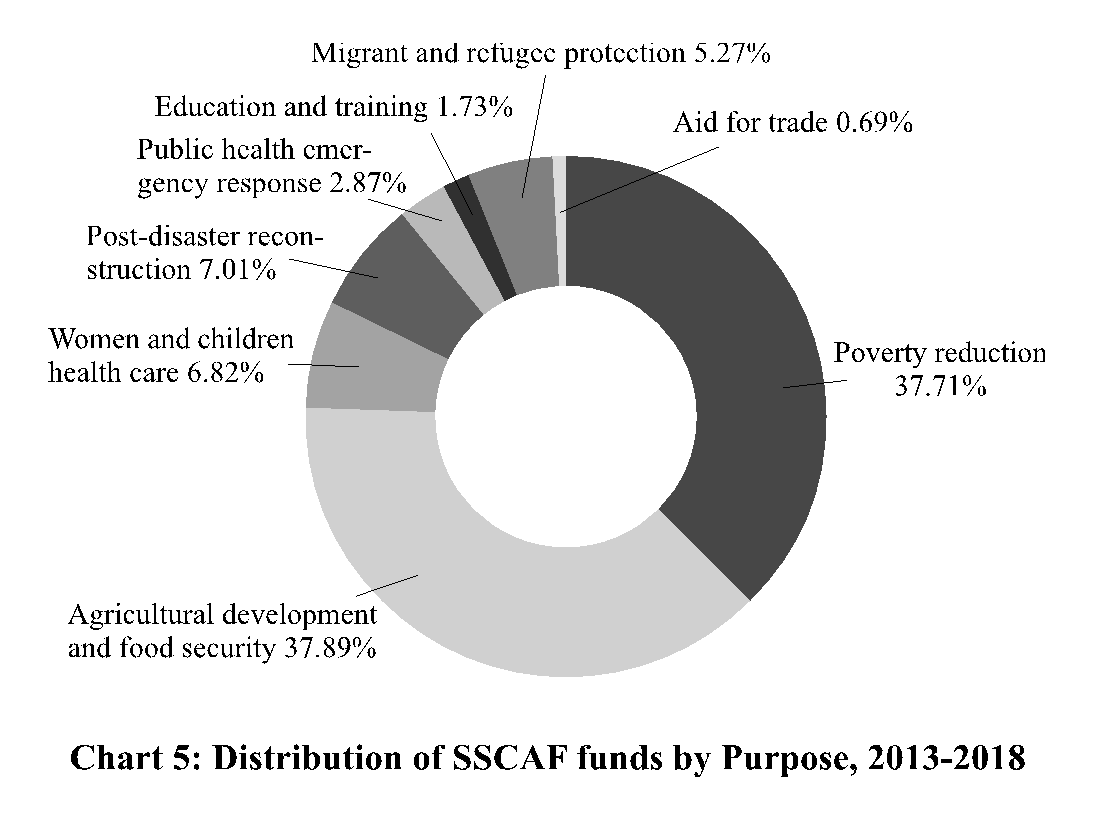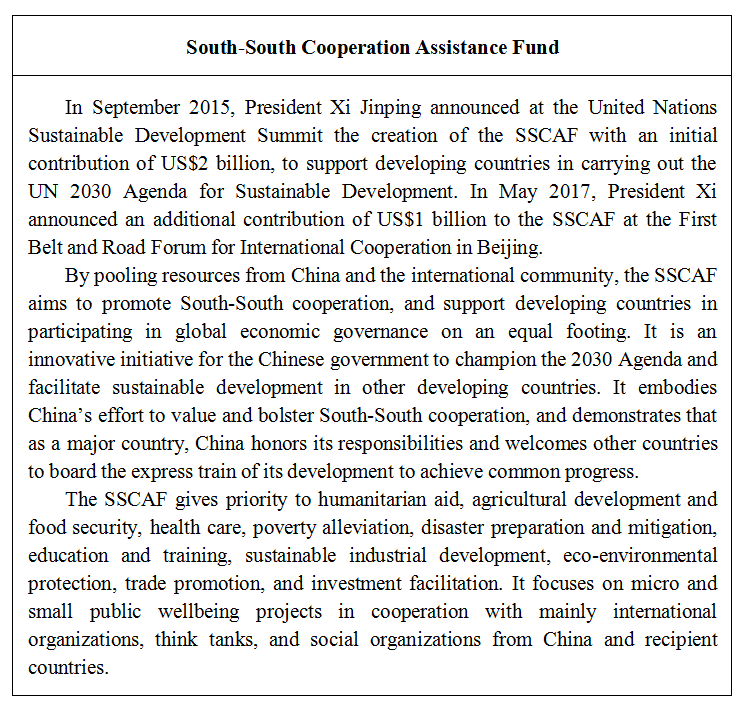Full text: China's International Development Cooperation in the New Era
II. Achieving New Progress in International Development Cooperation
China has continued a steady increase in the scale of its international development cooperation, giving high priority to the least developed countries in Asia and Africa and developing countries participating in the Belt and Road Initiative. To adapt to changes in the domestic and international situation, China has reformed its management system and is exploring new ways to promote international development cooperation with better results.
1. Steady Growth
China has steadily increased the scale and further expanded the scope of its foreign aid. From 2013 to 2018, China allocated a total of RMB270.2 billion for foreign assistance in three categories – grants, interest-free loans, and concessional loans. Grants of RMB127.8 billion, accounting for 47.3 percent of the total, mainly went to help other developing countries build small and medium-sized social welfare projects and to fund projects for cooperation in human resources development, technical cooperation, material assistance, and emergency humanitarian assistance, as well as projects under the South-South Cooperation Assistance Fund. Interest-free loans of RMB11.3 billion, constituting 4.18 percent of the total, were mainly allocated to help developing countries construct public facilities and launch projects for improving local people's lives. Concessional loans of RMB131.1 billion, making up 48.52 percent of the total, were provided to help developing countries undertake industrial projects and large and medium-sized infrastructure projects that yield economic and social benefits, and for the supply of technical services, complete sets of equipment, mechanical and electrical products, and other goods and materials.
From 2013 to 2018, China extended assistance to 20 regional and international multilateral organizations and 122 countries across the world – 30 in Asia, 53 in Africa, 9 in Oceania, 22 in Latin America and the Caribbean, and 8 in Europe.
2. Diverse Forms
In addition to undertaking complete projects, providing goods and materials, and conducting technical cooperation, China set up the South-South Cooperation Assistance Fund in 2015 to launch development cooperation programs, and continues to explore new models and methods of foreign aid.
– Complete projects. From 2013 to 2018, China undertook the construction of 423 complete projects, with the focus on infrastructure and agriculture. In addition to the traditional "turnkey" model of assistance, China also launched pilot projects in some countries and regions with sound tendering processes and experience in organizing and implementing such projects. Under this model, China provided both funds and technical assistance to those projects, and the recipient countries were responsible for site survey, design, construction, and process management.
– Goods and materials. From 2013 to 2018, China provided 124 countries and regions with 890 deliveries of goods and materials, most of which comprised mechanical equipment, inspection equipment, transport vehicles, medicine and medical devices.
– Technical cooperation. From 2013 to 2018, China completed 414 such projects in 95 countries and regions, mainly covering industrial production and management, agricultural planting and breeding, culture and education, sports and training, medical and health care, clean energy development, and planning and consulting.
– Cooperation in human resources development. From 2013 to 2018, China held more than 7,000 training sessions and seminars for foreign officials and technical personnel and in-service education programs, training a total of some 200,000 people. Such projects cover more than 100 subjects in 17 fields, including politics and diplomacy, public administration, national development, poverty reduction through agricultural development, medical and health care, education and scientific research, culture and sports, and transport.
– South-South Cooperation Assistance Fund. By the end of 2019, China had launched 82 projects under the SSCAF framework in cooperation with 14 international organizations, including the United Nations Development Programme (UNDP), World Food Programme (WFP), World Health Organization (WHO), United Nations Children's Fund (UNICEF), United Nations Population Fund (UNFPA), United Nations High Commissioner for Refugees (UNHCR), International Organization for Migration (IOM), and International Committee of the Red Cross (ICRC). These projects cover agricultural development and food security, poverty reduction, health care for women and children, response to public health emergencies, education and training, post-disaster reconstruction, migrant and refugee protection, and aid for trade.
– Medical teams. By the end of 2019, China had dispatched 27,484 medical workers in 1,069 groups to 72 countries and regions. They worked in all departments of medical and health care, including internal medicine, surgery, gynecology, pediatrics, traditional Chinese medicine, anesthesiology, patient care, pathology, clinical laboratories, and public health. Currently there are nearly 1,000 Chinese medical workers providing assistance at 111 health care facilities in 55 countries across the globe.
– Outbound volunteers. From 2013 to 2018, China dispatched more than 20,000 young volunteers and volunteer Chinese-language teachers to work in over 80 countries around the world.
– Emergency humanitarian aid. From 2013 to 2018, China extended emergency humanitarian assistance to 60 countries. This included providing supplies and equipment, dispatching international rescue teams and medical expert groups, and repairing damaged facilities.
– Debt relief. From 2013 to 2018, China canceled RMB4.18 billion of debts involving 98 mature interest-free loans to least developed countries, heavily indebted poor countries, and landlocked and small island developing countries.
3. Groundbreaking Progress in Reform and Management
To better adapt to the new circumstances, China has reformed its foreign aid systems and mechanisms to improve management and promote international development cooperation in the new era.
– Institutional reform. In April 2018, the Chinese government set up the China International Development Cooperation Agency (CIDCA) directly under the State Council. This is a significant move to safeguard world peace and promote common development. It serves to better plan and coordinate efforts on international cooperation and build synergy for development. The establishment of such a specialized agency represents a milestone in China's foreign aid journey.
– Better management. China has improved its evaluation mechanisms for foreign aid projects, so as to raise the quality and depth of feasibility analysis. To make feasibility studies more forward-looking, environmental impact, future management and other long-term factors are taken into consideration.
China has formulated clearly defined project management rules and regulations, improved procedures for governmental procurement, contract performance, and qualification assessment of enterprises bidding for foreign aid projects, and endeavored to establish a tendering system focusing on high quality and competitive pricing. To guard against corruption, China has strengthened the performance appraisal mechanism for entities undertaking projects.
China has optimized its rapid response mechanism for emergency humanitarian aid to ensure prompt and effective assistance, and strengthened supervision and evaluation to improve the overall efficiency of its foreign aid.
